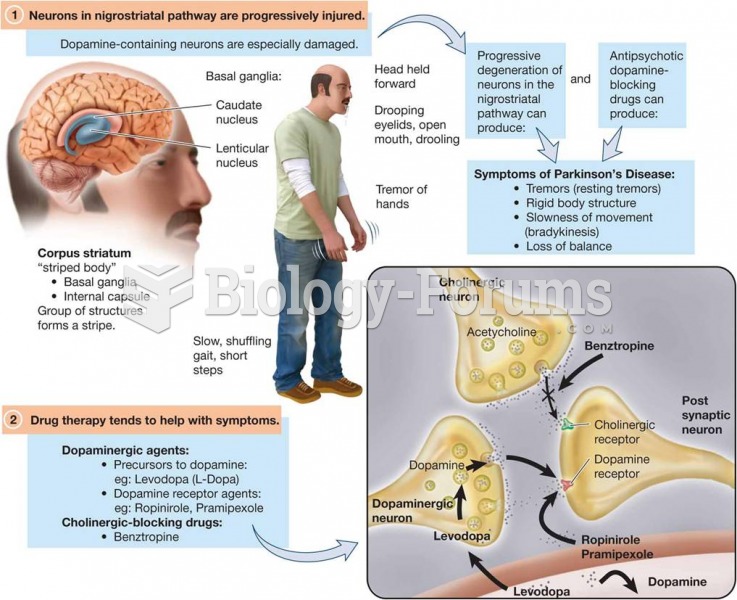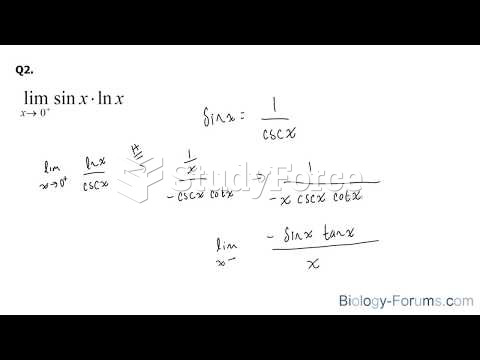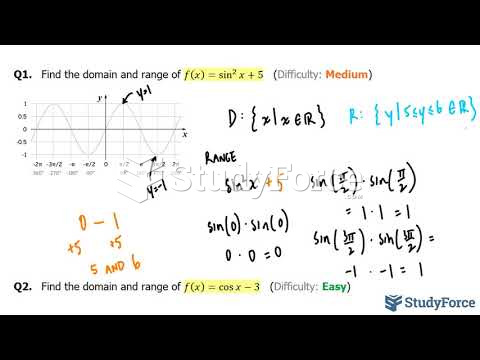|
|
|
Did you know?
A good example of polar molecules can be understood when trying to make a cake. If water and oil are required, they will not mix together. If you put them into a measuring cup, the oil will rise to the top while the water remains on the bottom.
Did you know?
It is important to read food labels and choose foods with low cholesterol and saturated trans fat. You should limit saturated fat to no higher than 6% of daily calories.
Did you know?
On average, the stomach produces 2 L of hydrochloric acid per day.
Did you know?
Thyroid conditions may make getting pregnant impossible.
Did you know?
The B-complex vitamins and vitamin C are not stored in the body and must be replaced each day.







